Small things tend to attract attention and fascinate people. The same is true for small turtles. If a turtle is as big as a coin, I believe many people will take it in their pocket at any cost. Here, we will introduce the ten smallest turtles in the world, including miniature musk turtle, stone mud turtle, tiger musk turtle, helmeted mud turtle, flat-backed musk turtle, giant tortoise, Egyptian tortoise, diamondback turtle, Eagle-billed turtle and red-faced mud turtle. With their impressive size, these miniature turtles will undoubtedly be a fascinating addition to animal lovers.
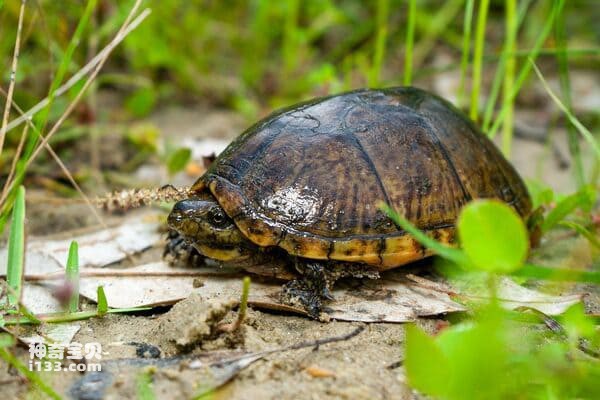
1. Mini Musk Turtle (5-8 cm)
As the name suggests, the miniature musk turtle is a small, delicate and cute turtle. Adult male musk turtles are usually only 5 to 6 centimeters in size, and female musk turtles are only 7 to 8 centimeters. It’s hard to imagine that such a tiny miniature musk turtle can be captured in such detail by the naked eye. They are mainly found in Florida, USA, and feed mainly on fish, shrimp and earthworms. At first sight, there is not much difference between the mini musk turtle and the ordinary musk turtle. The markings of the two are basically similar, but the body shape of the mini musk turtle is narrow in front and wide in the back, while this feature of the ordinary musk turtle is not obvious. In addition, the adult color of the miniature musk turtle is darker, while the common musk turtle is lighter. It is not easy to find a purebred miniature musk turtle on the market, and turtle lovers need to choose carefully.

2. Fruit core mud turtle(7-8 cm)
The stone mud turtle is one of the smallest adult turtles in the world. Wild female adults are about 7-8 cm in length, and male adults are about 7.5 cm in length. Their typical lifespan is between 30 and 55 years. Wild stone mud turtles usually have some algae attached to their carapace, which helps them better integrate into the natural environment and provide effective protection. These little guys are mainly found in Florida, USA. They mostly inhabit swamps and mire, and are particularly fond of habitats with a soft bottom layer of sand or silt. The stone turtle is a carnivore, feeding on insects, molluscs and amphibians, and occasionally plant seeds, leaves and various algae.

3. Giant turtle(7-10 cm)
Despite the word "giant" in its name, the giant tortoise is actually a smaller turtle. The carapace length of an adult male giant tortoise is 7 to 9 centimeters, while the carapace length of an adult female giant tortoise is approximately 8 to 10 centimeters. Found mainly in the southeastern United States, they like to inhabit rivers, creeks, swamps and oxbow lakes, and are also prone to climbing downed trees or rocky outcrops from the water. They prefer habitats that are surrounded by obstacles, often choosing large springs, streams, rivers, oxbow lakes, swamps, and ponds made of limestone. Aquatic insects, crustaceans, small shrimps, small fish, spiders and small reptiles are their food.
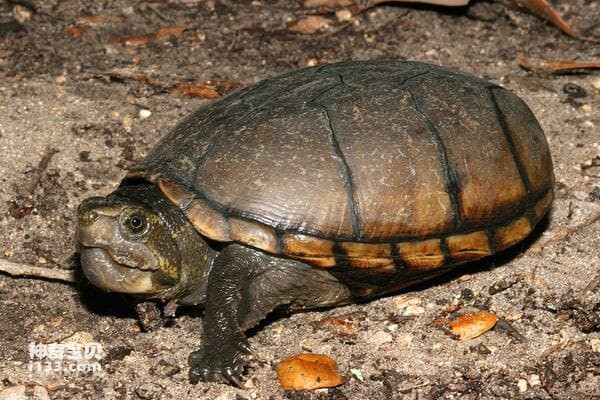
4. Helmet mud turtle(7.5-10 cm)
The helmeted mud turtle, also known as the Oriental mud turtle, is about 7.5 to 10 cm in length. The head usually has significant spots or markings, with relatively few streaks, and is usually brown. This semi-aquatic turtle has a wide range, ranging as far south as the Florida coast, through central Texas, into the valleys of northern Mississippi, and into Missouri, Indiana, and southern Illinois, with smaller populations Found in southwestern New York and Connecticut. They inhabit wet meadows, drainage ditches and marshy areas, and can also survive in salty water. In mid-summer, the turtles excavate burrows on the edges of swamps and fields for aestivation.
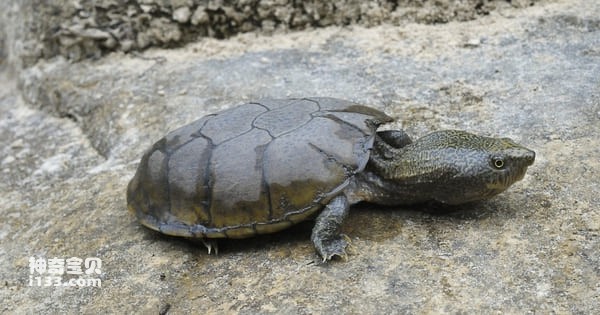
5. Flat-backed Musk Turtle(7.6-11.4 cm)
The flatback musk turtle is a shy, small water turtle named for its relatively flat carapace compared to other members of the species. Adult flatback musk turtles usually measure 7.6 to 11.4 centimeters in length, and their lifespan is approximately 30 to 40 years. This turtle is mainly distributed in the upper and lower reaches of the waters of Alabama in the United States. They prefer to inhabit medium-sized rivers, wide creeks and even dams. In the initial stage, they feed on molluscs and sometimes insects and worms. They are especially active in the weak sunlight of dusk and at night, especially in midsummer.
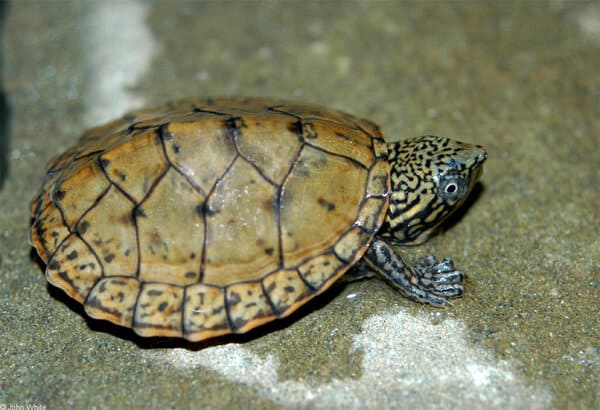
6. Tiger Musk Turtle(7-12 cm)
The tiger musk turtle, also known as the strip-necked musk turtle, is famous for its unique tiger pattern on its head, which is a distinctive feature of this species. Adult tiger musk turtles are generally between 7 and 10 centimeters long, with the largest individual only reaching 12 centimeters. They are mainly found in southwestern Virginia, extending to eastern Tennessee, and south to southeastern Mississippi. As a completely aquatic musk turtle, they prefer to inhabit creeks and shallow, rocky areas. Food mainly consists of insects, snails and other small animals, and occasionally plants in the fields.
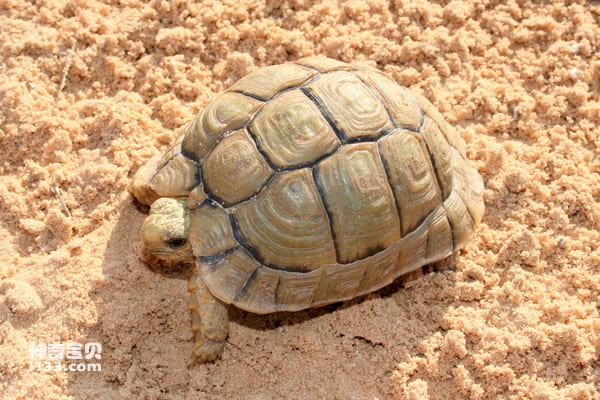
7. Egyptian tortoise(10-14 cm)
The Egyptian tortoise is a rare and particularly cute small tortoise that once lived near the Sahara Desert. They are rare miniature tortoises, usually between 10 and 14 centimeters in length, and their round shape adds to their appeal. The golden back is highly arched, like an upside-down golden bowl. Egyptian tortoises are accustomed to living in desert and semi-arid environments, such as gravel plains, rocky areas, sandy wadis, and dry woodlands. They have strong adaptability to dry and cool environments. Their food intake is very small and they mainly feed on weeds and fallen leaves.
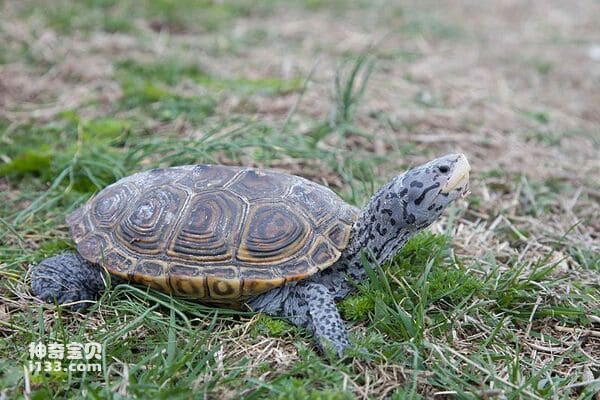
8. Diamond turtle(11-17.1 cm)
The diamondback turtle, also known as the diamondback turtle, is a larger turtle with grooves on its head and carapace. Females are usually twice the size of males when sexually mature. Adult male Diamondback Turtles are generally about 11 centimeters in length, while adult female Diamondback Turtles can reach 17.1 centimeters in length. The lifespan of this type of turtle ranges from 25 to 40 years. Native to the eastern and southern regions of the United States, the diamondback turtle is the only turtle in North America that lives in salty waters. They are often found in coastal areas and their food sources include shellfish, shrimp, crabs, snails and various small fish.
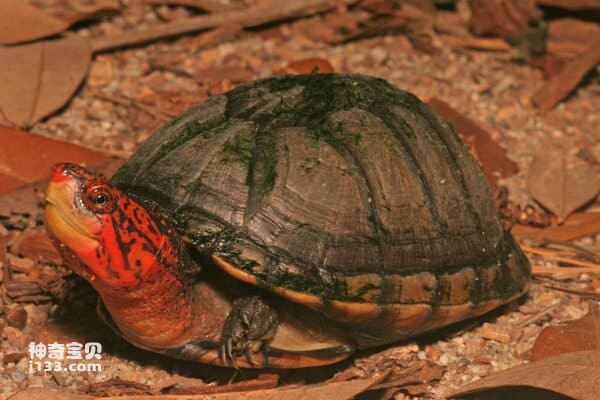
9. Red-faced mud turtle (12-17.5 cm)
The red-faced mud turtle, also known as the red-faced egg turtle, is a subspecies of the Amazon mud turtle. The turtle's shell is flat, usually solid gray or nearly black, and its body is generally not very large, with a body length between 12 and 17.5 centimeters. An adult male weighs approximately 350 grams, while an adult female weighs approximately 400 grams. This turtle is mainly found in Central and South America, inhabiting rivers and swamps. Their main diet is meat, and their diet includes small fish and fresh shrimps.
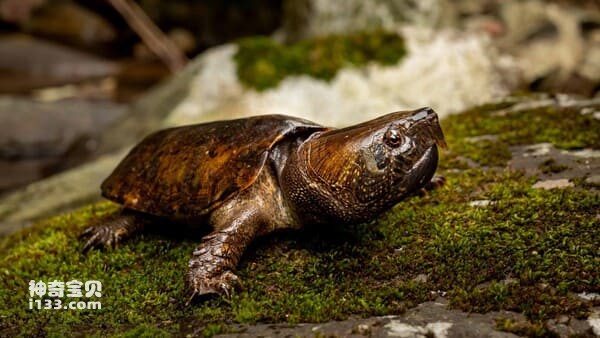
10. Eagle-billed turtle (12-18 cm)
The eagle-billed turtle, scientifically known as the ratite turtle, is famous for its beak-like pointed beak. Because its head is too large to retract into its shell, its appearance is quite comical. The eagle-billed turtle is also a relatively common small turtle, with the carapace length of an adult ranging from 12 to 18 centimeters. They are mainly distributed in Southeast Asian countries such as Vietnam, Thailand, and Myanmar, as well as southern China, and inhabit rocky shallow streams in mountainous areas. Due to its amphibious nature, the eagle-billed turtle can climb cliffs to feed or bask in the sun, and has excellent climbing abilities. Its main food is mainly meat, and it likes to eat snails, snails and other animals, and occasionally some wild fruits.
The top ten smallest turtles in the world are mainly obtained by searching relevant online platforms to find small and medium-sized turtle species of the order Turtles, and taking into account their morphological characteristics, popularity, and influence. If you have any questions, please leave comments/criticisms at the end.
animal tags: tortoise
We created this article in conjunction with AI technology, then made sure it was fact-checked and edited by a Animals Top editor.